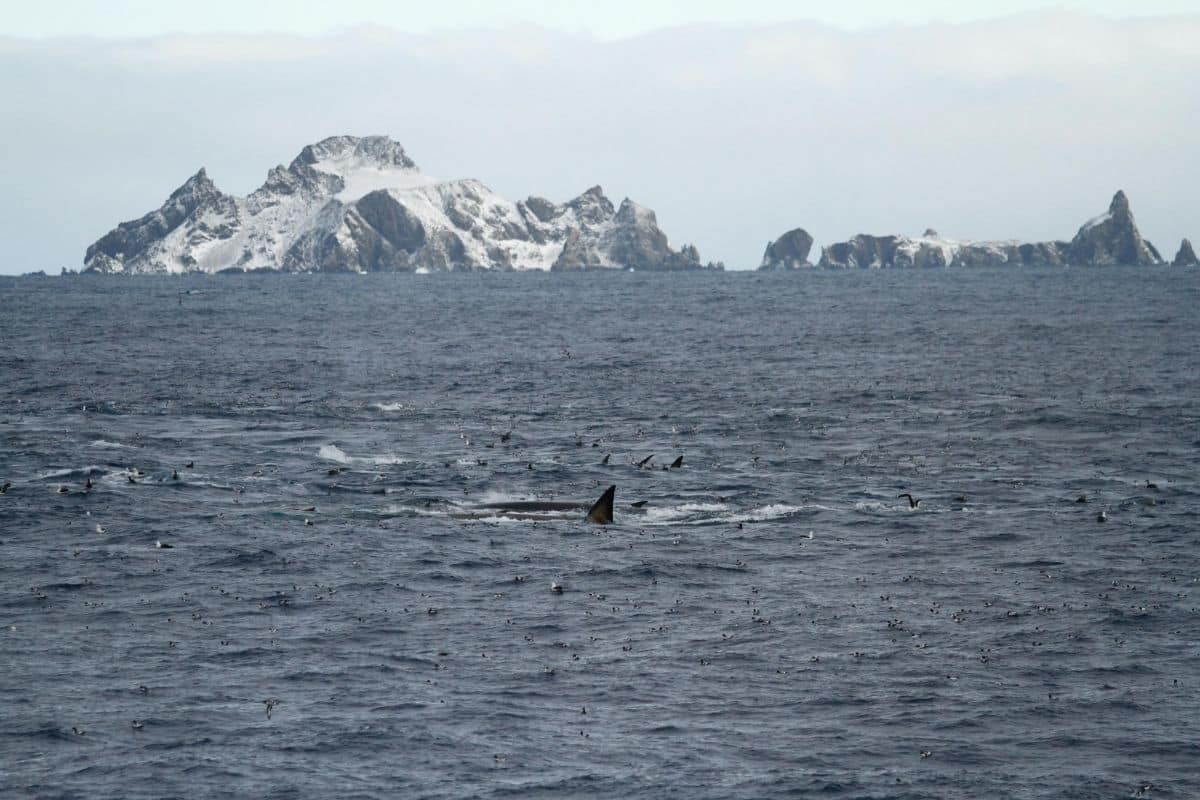

For the first time since the whaling ban, large groups of fin whales have been spotted around Antarctica.
“I had never seen so many fin whales in one place, it was absolutely fascinating.” These are the words of researcher Bettina Meyer, who led a major expedition to Antarctica from March to May 2018 with the well-known icebreaker Polarstern. During the expedition, but also a year later, the researchers spotted unprecedentedly large groups of southern fin whales. A very hopeful sight.
The southern fin whale (Balaenoptera physalus quoyi) is a subspecies of the fin whale that lives in the Southern Hemisphere. This cetacean can call itself the second largest animal in the world; only the blue whale is bigger. In addition, the southern fin whales are just a touch larger than their northern counterparts, with males reaching an average length of 20.5 meters and females averaging 22 meters.
For a long time, the southern common fish fish were not really prospering. In the nineteenth century, these cetaceans were heavily hunted, especially in specific feeding areas around Antarctica. The hunting of the fin whale was banned in 1976. But by that time, some 700,000 animals had already been killed, making the fin whale rarely seen in its native feeding area.
Recovering
However, according to German and British researchers, it appears that the population is currently recovering. During the expedition with the Polarnstern, the research team counted and filmed the number of fin whales over a distance of 3,251 kilometers. They encountered as many as 100 groups, each consisting of one to four animals. Near Elephant Island (which is part of the South Shetland Islands located in the Scotia Sea and the Southern Ocean), the researchers were completely taken by surprise. Here they saw a group of foraging fin whales consisting of as many as fifty individuals. Later they even counted about seventy in the same spot.
A year later
A year later, the researchers returned to Elephant Island. And this time too they were not disappointed. The team counted as many as 150 southern fin whales that had gathered around the island.

An iceberg fin whale, spotted near Elephant Island in 2019. Image: Dan Beecham
Everything seems to indicate that the fin whale is recovering. “Even though we don’t yet know the true numbers of fin whales around Antarctica, these sightings are a good sign that nearly 50 years after the ban on commercial whaling, the fin whale population around Antarctica is recovering,” said Meyer.
Population size
To better understand the current state of the southern fin whale, the researchers made a new estimate of the population size based on their observations. The team suspects that there are about 7,909 fin whales in the entire study area, with a density of 0.09 animals per square kilometer. For your imaging, that’s pretty high compared to the fin whale population in other parts of the world. For example, off the coast of Southern California, there are 0.003 fin whales per square kilometer. According to the researchers, most fin whales around Antarctica are found near Elephant Island. An estimated 3,618 individuals live here, or 0.21 fin whales per square kilometer.
cycle
The recovering fin whale population is good news for the entire marine ecosystem. Fin whales eat krill. They then defecate important nutrients, which fertilize the ocean. For example, their poo is rich in iron (which is relatively scarce around Antarctica), which in turn supports the blooming of carbon-absorbing phytoplankton. In turn, phytoplankton is back on krill’s menu. And so the circle is complete again. “As the fin whale population grows, more nutrients are recycled, increasing productivity in the Southern Ocean,” explains Meyer. “This then stimulates the growth of algae, which in turn absorb carbon dioxide from the atmosphere through photosynthesis. And this in turn lowers the atmospheric CO2 concentration.”
In short, the researchers suggest that the recovery of the fin whale population could also help to further contain climate change. Because the more fin whales, the more poo, which in turn leads to more phytoplankton that pluck CO2 from the air and store it in the ocean. It means that we may receive help from an unexpected source. It is therefore hoped that the number of fin whales will continue to increase unperturbed in the coming period.
Source material:
†150 whales observed feeding together– Alfred Wegener Institute (via EurekAlert)
†Fin whale populations making a splash in Antarctic waters– University of Hamburg (via Scimex)
Image at the top of this article: Sacha Viquerat